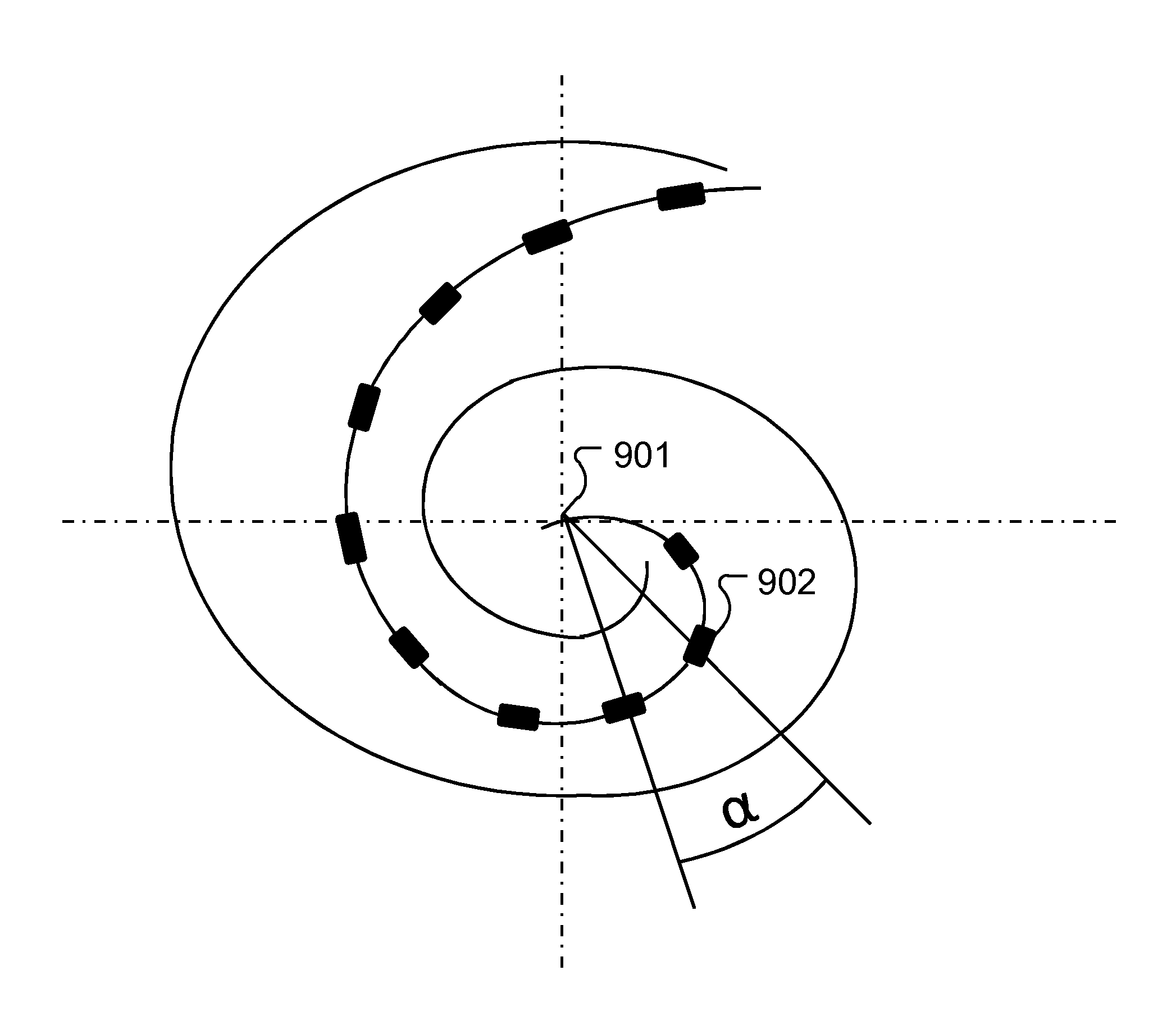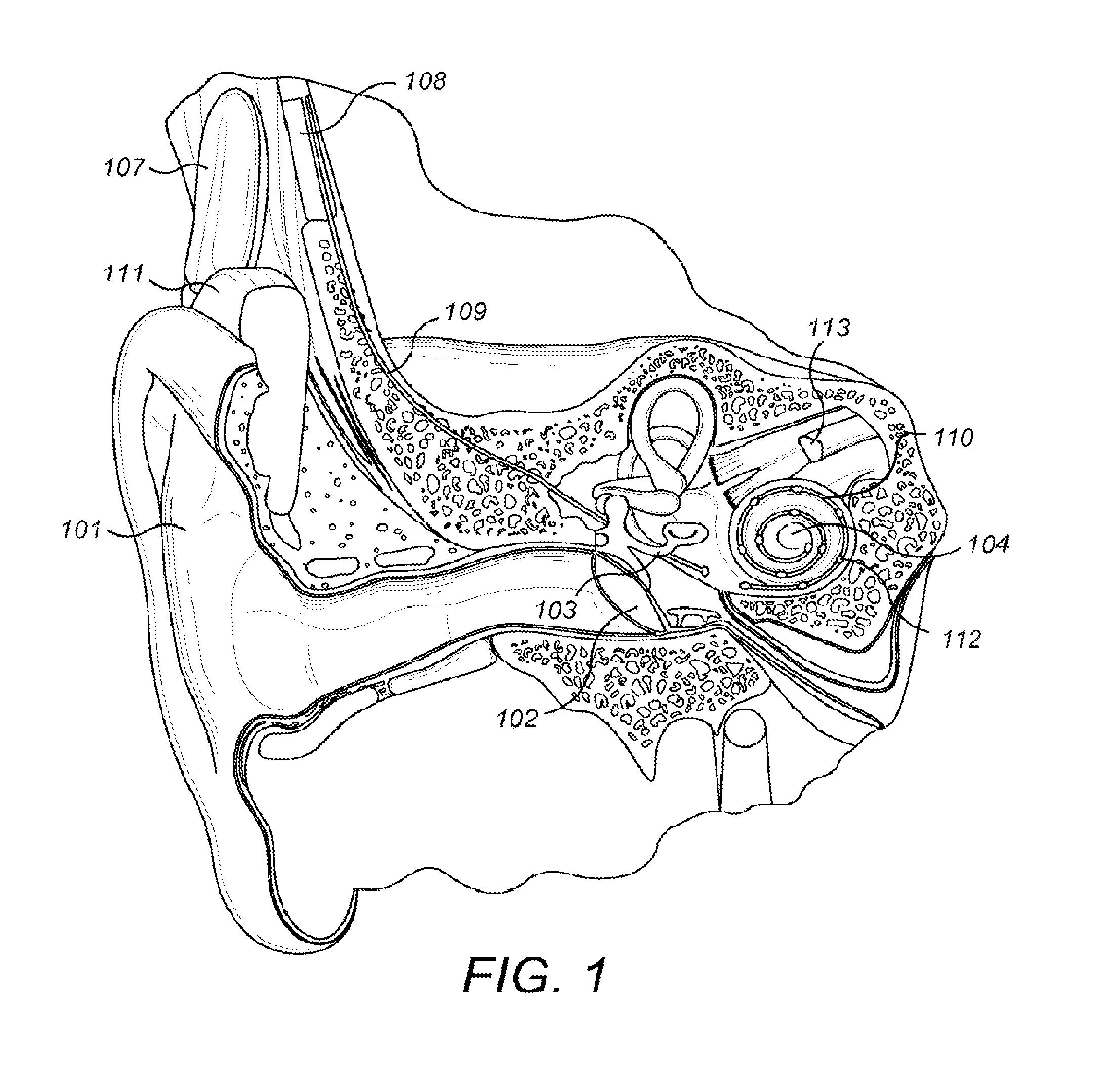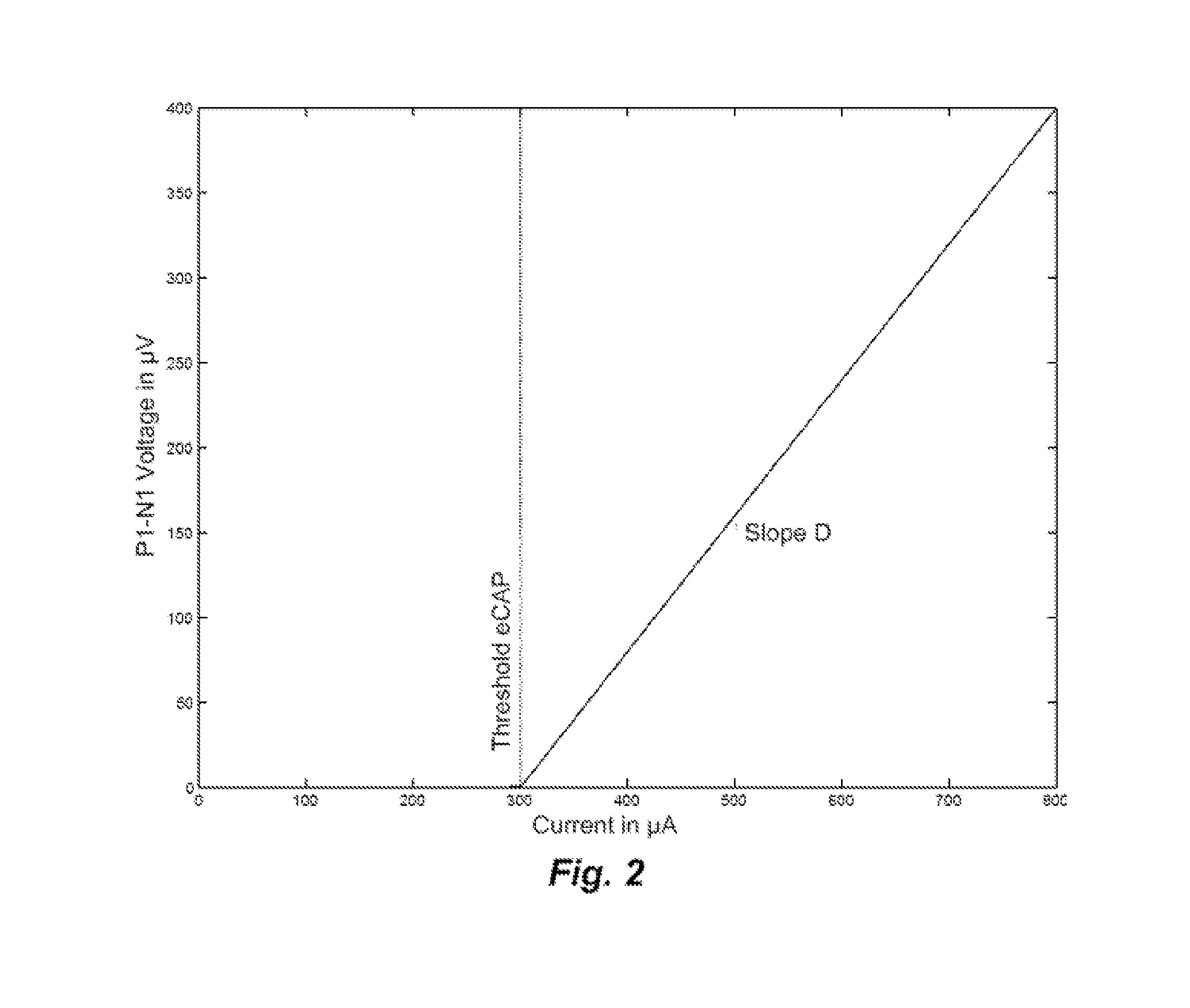Objective Allocation of Implant Electrode Bands Based on Excitation Spread
a cochlea implant and electrode array technology, applied in the direction of internal electrodes, artificial respiration, therapy, etc., can solve the problems of spectral and temporal confusion, surgical insertion procedure bears a significant risk of “fold-over” of the electrode array within the cochlea, and the determination of place pitch using a psychoacoustic procedure is very time-consuming and laborious
- Summary
- Abstract
- Description
- Claims
- Application Information
AI Technical Summary
Benefits of technology
Problems solved by technology
Method used
Image
Examples
Embodiment Construction
[0025]Embodiments of the present invention are directed to using current spread at the electrode contacts to detect fold-over of the electrode array and subsequent adaptation during stimulation. Once a fold-over is detected, a mapping can be made of the electrode contacts to the various frequency channels and from this an optimal frequency band allocation to each electrode contact. The current spread can be calculated in various ways such as by neural excitation spatial spread (SS) voltage measurements and eCAP (electrically-evoked compound action potentials) threshold measurements or by Impedance Field Telemetry (IFT). One specific embodiment detects electrode array fold-over starting with performing eCAP measurements and determining the amplitude growth function and the eCAP threshold. In spatial current spread SS measurements, a constant stimulus current is used for each electrode contact. This allows an estimation of current spread based on measured SS voltages where for any mis...
PUM
 Login to View More
Login to View More Abstract
Description
Claims
Application Information
 Login to View More
Login to View More - R&D
- Intellectual Property
- Life Sciences
- Materials
- Tech Scout
- Unparalleled Data Quality
- Higher Quality Content
- 60% Fewer Hallucinations
Browse by: Latest US Patents, China's latest patents, Technical Efficacy Thesaurus, Application Domain, Technology Topic, Popular Technical Reports.
© 2025 PatSnap. All rights reserved.Legal|Privacy policy|Modern Slavery Act Transparency Statement|Sitemap|About US| Contact US: help@patsnap.com



